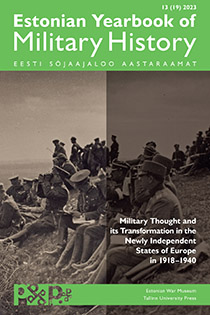Abstract
Estonia failed to take adequate lessons from World War I to defend itself from the looming threat of the Soviet Union, and instead spent its limited resources on acquisitions of marginal utility and failed to adequately reform its military. Its international position was further weakened by an inability to forge appropriate alliances due to infighting among the countries of Northern Europe. This paper will shed light on the complex interplay of geopolitical factors, internal dynamics and the strategic choices made by Estonia during that critical time and explore how these insights can inform current defence strategies. During the interwar period, Estonia sought to modernise and organise its military forces, facing constraints in arming its soldiers with a hotchpotch of equipment comprising leftover Russian and German arms, lendlease British equipment, and other sundries. Despite these challenges, Estonia made efforts to establish a defensive line in the northeast of the country and pursued alliances with Finland, Latvia, Poland and other states. It made preparations for a southeastern defensive network along the Võru axis, but ground had not yet been broken by the time of the Soviet ultimatum. Both efforts ultimately failed, and Estonia was occupied by the Soviet Union in 1940. Lessons from this failure can be applied to the current strategic situation in the Baltic region, given the continuing importance of NATO and the renewed military significance of deliberate defensive positions backed up by long-range precision firepower and anti-access/area-denial weapons.

This work is licensed under a Creative Commons Attribution-NonCommercial-NoDerivatives 4.0 International License.
Copyright (c) 2025 Eesti Sõjaajaloo Aastaraamat / Estonian Yearbook of Military History
